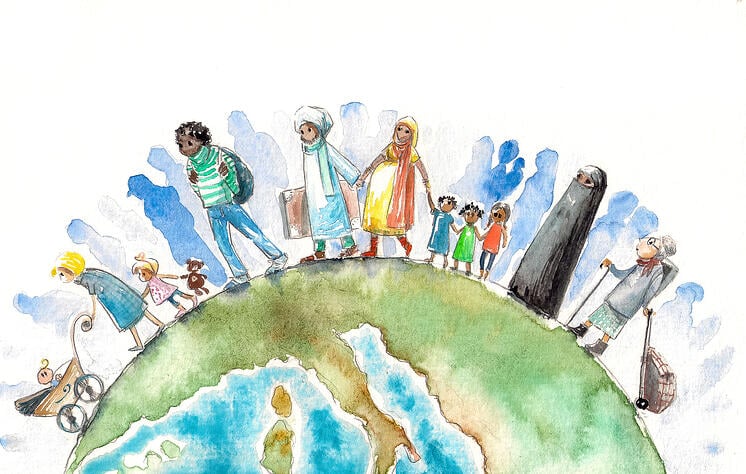IMMIGRATION AND EMIGRATION: BRIEF COMPARATIVE ANALYSIS OF INDIA AND EUROPE
Immigration and emigration have been an integral part of human history, with people moving from one place to another for various reasons, such as work, education, or seeking a better quality of life. In this article, we will compare the immigration and emigration patterns of India and Europe.
India, a country located in South Asia, has a population of over 1.3 billion people, making it the second-most populous country in the world. India has a diverse culture and is home to people from different religions, languages, and ethnicities. The country has a long history of emigration, with millions of people moving to different parts of the world, especially to the Gulf countries, the United States, Canada, and Australia, in search of better job opportunities.
Europe, on the other hand, is a continent located in the Northern Hemisphere and has a population of around 750 million people. Europe has a rich history and culture and is home to people from different ethnicities and nationalities. The continent has experienced a significant inflow of immigrants in recent years, mainly from Africa and the Middle East, due to political and economic instability in those regions.
India’s emigration has been driven by economic factors, with people seeking better job opportunities and higher wages. According to the World Bank, India was the top country of origin for international migrants in 2019, with over 18 million people living outside the country. The majority of these migrants are in the Gulf countries, followed by the United States and Canada.
Europe, on the other hand, has experienced a significant influx of immigrants in recent years, mainly due to political and economic instability in Africa and the Middle East. The European Union (EU) has implemented various policies to manage immigration, including the Schengen Agreement, which allows free movement of people within the EU, and the Common European Asylum System, which provides a framework for processing asylum applications.
India has also been a destination for immigrants, with people coming from different parts of the world for work or study. The country has a large number of international students, with over 750,000 students enrolled in universities and colleges in 2019. The majority of these students come from neighbouring countries such as Nepal and Bangladesh, followed by African and Southeast Asian countries.Europe has also been a destination for immigrants, with people coming from different parts of the world for work, study, or seeking asylum. According to Eurostat, the EU’s statistical agency, the number of non-EU citizens living in the EU increased by 2.4 million in 2019, reaching a total of 22.8 million. The majority of these immigrants come from Africa and Asia, with the highest numbers coming from Morocco, Turkey, and India.
In conclusion, immigration and emigration are complex phenomena that are shaped by various factors, such as economic, social, and political factors. India and Europe have different patterns of immigration and emigration, driven by different factors. While India’s emigration is mainly driven by economic factors, Europe has experienced a significant influx of immigrants due to political and economic instability in Africa and the Middle East. Both regions have also been a destination for immigrants, with people coming from different parts of the world for work, study, or seeking asylum.
Ujjwala Gupta, Senior Legal Counsel, SUO



